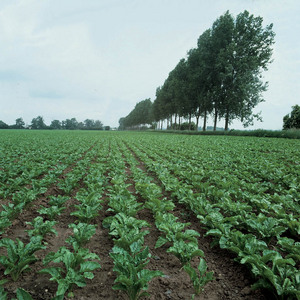I had a flu jab recently. The vaccine is to protect against the strains of flu mostly likely to occur this coming winter. It got me thinking about the long standing debate over the last few decades about prophylactic versus rational decision-making for pesticide use. Nobody now supports prophylaxis, but there is an issue regarding the definition of rational and responsible decision-making.
About fifteen years ago, a Government Committee on Pesticides visited Morley Farm, the home of NIAB TAG in Norfolk. I described the approach to pesticide use on the farm and mayhem literally broke out when I described weed control in sugar beet. The adopted FAR approach meant that every week, for at least three weeks after crop emergence, the crop was sprayed with a tank-mix of herbicides, all at very low doses. Weeds typically had a maximum size of not much bigger than early cotyledon when they were sprayed. After three applications the intensity of treatment was eased according to observations on weed emergence.
The committee was horrified by such an approach because there was no opportunity for us to identify both the species and number of weeds emerging in order that we could take a more ‘rational’ decision on whether or not to spray. This, they claimed, was an essential requirement for responsible pesticide use. I tried and tried to get them to realise that all our trials had shown that, overall, FAR involved significantly lower levels of herbicide use than in the more conventional programmes but their minds were closed. My horror of such an attitude was further reinforced a few months later when at a conference I gave a paper mentioning the FAR approach and the level of pesticide savings involved. In the audience a high ranking scientist in MAFF was vehemently shaking his head in disagreement.
Hence, at around the turn of the millennium it was obvious that in official circles, rational decision-making necessarily involved thresholds. This was despite a large multi-site field trial project in the 1990s investigating the role of weed thresholds for broad-leaved weed control in winter cereals. The results showed that the annual use of lower-than-recommended doses of herbicides used less herbicide over time than the use of thresholds to decide whether or not to treat. In addition, there were high costs associated with doing the necessary field surveys to assess weed numbers for the threshold approach. On a more theoretical level, modellers had also reached the same conclusion for wild-oat control.
It’s now clear to all in the industry that thresholds (including those based on forecasting) are not the universal approach to rational decision-making on pesticide use. This may be because once a threshold has been exceeded, effective and timely control may not be achieved, either because of weaknesses in the pesticides to be employed or because of weather delays. The FAR approach initially seemed wrong to many but was the right solution bearing in mind the limitation of the selective herbicides available.
Very effective pesticides will increase the prospect of thresholds being adopted. For instance, those who prefer a situation where weed numbers and species are assessed before making a herbicide application in sugar beet should really be on the side of GM glyphosate tolerant beet which currently offers the only hope for the practical adoption of such an approach.
The precautionary principle is clearly behind the widespread inoculation against flu. By the time an epidemic has started and the specific strain identified it is too late to make the vaccine and inoculate the most vulnerable. Those who argue against the registration of some pesticides and GM crops also invoke the precautionary principle to support their arguments. However, the very same people fail to see that farmers may also have to invoke the precautionary principle rather than thresholds when taking carefully assessed risk-based decisions on pesticide use.
The important thing to bear in mind is that there are various approaches that farmers must take when assessing the need for pesticide application. Thresholds are the right approach in some circumstances, particularly for insecticide application. In others, thresholds are both impractical and unwise and alternative precautionary, but risk-based strategies have to be adopted. Unfortunately, such risk assessments are now heavily influenced by the reality of pesticide resistance which results in farmers having to take a more precautionary approach. It should be noted that risk assessments are also necessary for the applicability of adopting cultural measures that may reduce a farm’s reliance on pesticides.
